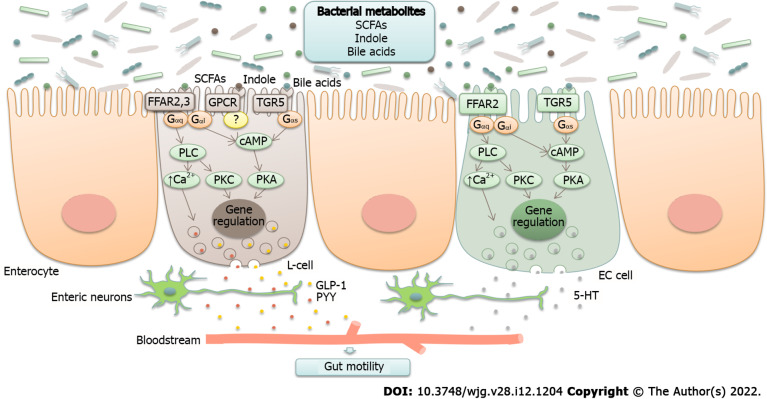Figure 1.
Neurotransmitter modulation by gut microbiota (schematic illustration). Bacterial metabolites, such as short-chain fatty acids (SCFAs), secondary bile acids, and indole, are able to stimulate the production of neurotransmitters, including glucagon-like peptide-1 (GLP-1), peptide YY (PYY), and serotonin (5-HT). They act through G-protein coupled receptors (GPCRs) FFAR2, FFAR3, and TGR5 that are coupled to different types of G proteins (Gαs, Gαq, and Gαi) and activate different pathways known to regulate gene expression and promote exocytosis by raising intracellular Ca2+ levels. SCFAs are recognized by FFAR2 and FFAR3. Enteroendocrine L-cells express both of these proteins, whereas enterochromaffin (EC) cells have been reported to express FFAR2. Bile acids are recognized by TGR5 receptors expressed in L-cells and EC cells. The sensing of indole remains elusive, although it is thought to act through GPCR. Gαs stimulates adenylate cyclase and elevates cyclic adenosine monophosphate (cAMP), which activates protein kinase A (PKA). Gαi inhibits the cAMP pathway. Gαq stimulates phospholipase C (PLC), resulting in the generation of diacylglycerol (DAG) and inositol triphosphate (IP3), which activate protein kinase C (PKC) and induce intracellular Ca2+ release[23,138-140]. SCFA: Short-chain fatty acids; GLP-1: Glucagon-like peptide-1; PYY: Peptide YY.

